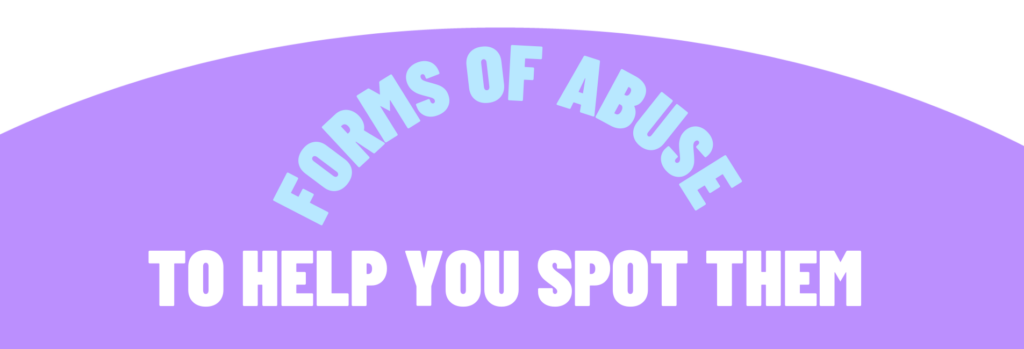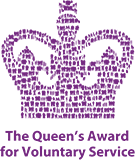
Domestic abuse is any incident or pattern of incidents of controlling, coercive or threatening behaviour, violence or abuse between those aged 16 or over who are or have been intimate partners or family members regardless of gender or sexuality.
Domestic abuse usually falls into one of the below categories. Click the drop-down button to read the signs for each form of abuse:
-
– Being kicked, punched, pinched, slapped, dragged, scratched, choked, bitten or pushed
– Use or threats of use of weapons
– Objects being thrown
-
– Constant yelling and shouting
– Verbal humiliation
– Constantly being laughed at and being made fun of
– Insults and threats
– Mocking someone about their disability, gender, sexual orientation, physical appearance
-
– The threat of violence
– The threat of use of weapons
– The threat of use of violence against family members or pets
– Destroying your personal and treasured items
– Threatening to remove your children OR that you will never see them again
-
– Intimidation
– Being stopped from seeing friends or relatives
– Constantly being insulted/belittled
– Manipulating your anxieties or beliefs
– Gaslighting
-
– Not allowing you to spend any money unless permitted
– Making you account for everything you spend
– Running up bills such as credit/store cards in your name
– Preventing you from claiming welfare benefits
-
– Sexual harassment/pressure/unwanted demands
– Forcing sex after physical assault
– Rape
– Forcing you to have sex (or commit a sexual act) against your will
– Forced/pressured into engaging in ChemSex
– Forced involvement into making or watching pornography
– Deliberately being hurt during sex
– Being pressurised or being tricked into having unsafe sex
-
– Isolating you from your friends and family
– Depriving you of your basic needs
– Monitoring your time
– Monitoring you VIA online communication tools or using spyware
– Taking control over aspects of your everyday life, such as where you can go, who you can see, what to wear and when you can sleep
– Depriving you access to support services, such as specialist support or medical services
– Enforcing rules and activity which humiliate, degrade or dehumanise you
– Controlling or monitoring your daily activities, including making you account for your time, dictating what you can wear, when you can eat
– Using substances to control you through dependency
– Threats to expose sensitive information
-
– Following you to and from work
– Checking your email and phone calls
– Regularly sending unwanted gifts
– Making unwanted or malicious communication
– Damaging property
– Physical or sexual assault
– Use of spyware or GPS locators on items such as phones, computers, wearable technology and cars
– Use of hidden cameras
-
– Unwanted contact
– Placing false and malicious information about you on your or others’ social media
– Being trolled
– Revenge porn/Image based abuse
– Monitoring or controlling your email and phone calls
– Hacking into, monitoring or controlling email accounts, social media profiles and phone calls
-
Honour-based abuse against LGBTQ+ people happens when family/community members disapprove of a person’s sexual orientation or gender identity, feeling it brings ‘shame’ on their family or community. People who carry out honour-based abuse are often close family members but also extended family or community members.
Honour-based abuse can take the form of a range of abusive behaviours and practices. This includes:
– Forced marriage
– Female genital mutilation
– Physical, Sexual, Emotional, Economic abuse and coercive control
– Threats to kill
– Being kept at home with no freedom
– Virginity testing
– Enforced abortion
-
Although domestic abuse can fall into these categories, there are some forms of abuse that usually only affect LGBTQ+ people. This can include:
– The threat of disclosure of sexual orientation and gender identity
– Undermining someone’s sense of gender or sexual identity
– An abusive partner may manipulate their partners into believing that abuse is a ‘normal’ part of same-sex relationships
– Threatening to disclose HIV status
– Withholding medication or preventing treatment needed to express the victim’s gender identity (e.g. hormones, surgery).
– Refusing to use correct pronouns
– Ridiculing a person’s body image related to gender identity (body shaming)
– Threats of using corrective treatments or honour-based abuse due to your sexual orientation or gender identity








